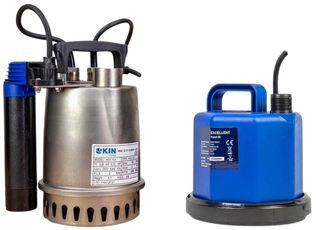
These pumps are designed to operate while fully submerged in liquid, making them ideal for applications where the liquid level constantly changes. In this comprehensive guide, we will discuss the various types of submersible pumps, their benefits, and how to choose the right pump for your application.
Submersible pumps are available in different configurations for various applications. Some common types of submersible pumps include:
Sump Pumps: Sump pumps are designed to remove water from basements or other areas where stagnant water can accumulate. They are commonly used in residential applications but can also be used in commercial and industrial settings.
Wastewater Pumps: Wastewater pumps are designed to handle untreated sewage and wastewater. They are often used in municipal wastewater treatment plants but can also be used in residential or commercial environments where sewage needs to be pumped to a septic tank or sewer line.
Dewatering Pumps: Dewatering pumps are designed to quickly remove water from construction sites, mines, and other areas where rapid water removal is required. They are often used in conjunction with other pumps to control water levels.
Well Pumps: Well pumps are used to bring water from underground sources to the surface. They are commonly used in residential and agricultural applications.
Submersible pumps offer several advantages over other types of pumps, including:
Energy Efficiency: Submersible pumps are typically more energy-efficient than other types of pumps because they do not have to work as hard to move fluid, resulting in potential cost savings over time.
Durability: Submersible pumps are designed to withstand harsh conditions and have a longer lifespan compared to other pump types. They are less prone to mechanical issues and require less frequent maintenance.
Space Saving: Submersible pumps are compact and do not take up much space because they are either submerged in liquid or installed inside wells.
When selecting a submersible pump, consider the following factors:
Flow Rate: The flow rate is the amount of liquid the pump can move within a specified time. It determines how quickly the pump can move fluid in your application.
Head Pressure: Head pressure is the force the pump needs to generate to move fluid to its destination. It is determined by the height and distance the fluid needs to be pumped.
Type of Liquid: Consider the type of liquid you need to pump, as some submersible pumps are designed to handle specific types of fluids, such as sewage or clean water.
Power Source: Submersible pumps can be powered by electricity or hydraulics. Choose the power source based on availability and cost in your region.
In conclusion, submersible pumps are a crucial part of equipment for many industries due to their energy efficiency, durability, and space-saving design. When choosing a submersible pump, consider factors like flow rate, head pressure, the type of liquid, and the power source to ensure you select the right pump for your application.
Didn't find the right Submersible pumps?
Fill in the form below, and we'll assist you further!
Curious about our blog? Check out all our items here!
Contact us here